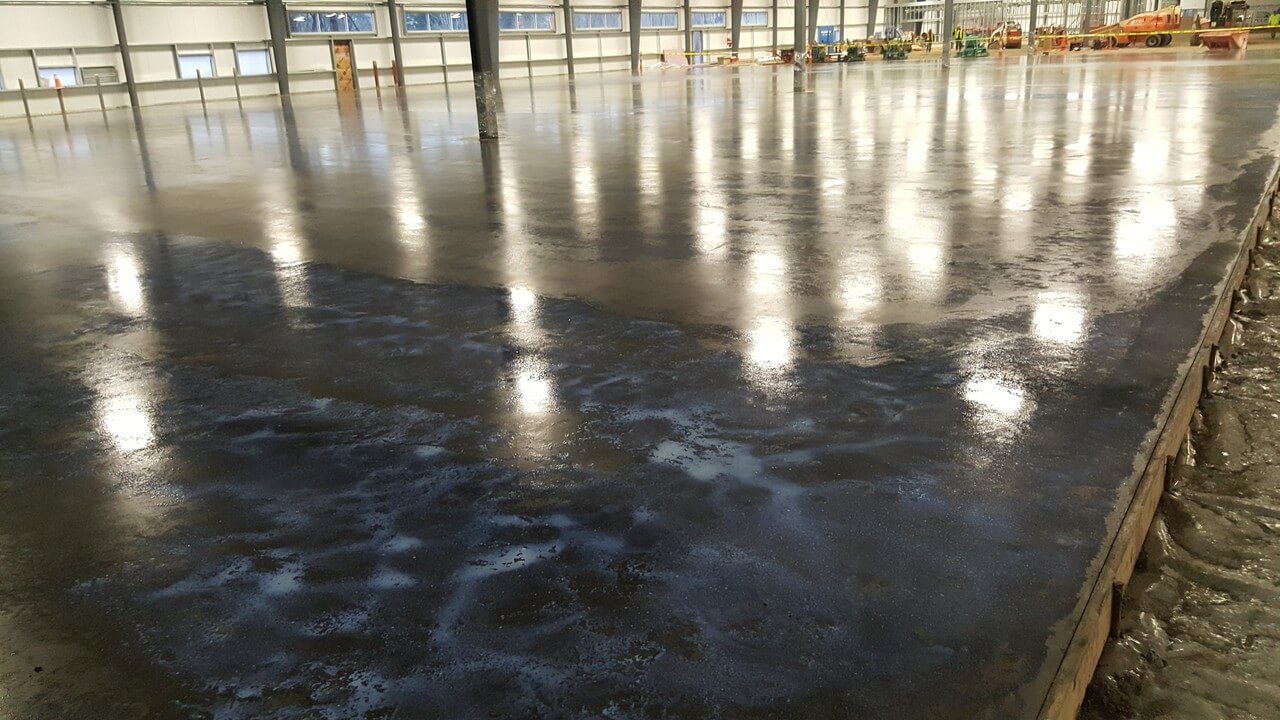Moisture and Combustion
Posted by Matt Milos on Sep 24th 2018

The concrete pictured above is nearly 24 hours old but, due to moisture levels, has not dried.
The safety concerns of a direct-fired heater are common knowledge. An open flame approaching 300 degrees and high CO2 emissions require careful attention, to be sure, but are not the only products of this kind of heat. The third major product of combustion may not harm your workers but will certainly harm your schedule: water vapor.
Though this is no shock to anyone working with heating, what many don’t understand is the amount of water vapor direct-fired heating produces. Norbord North America crunched some numbers, and the results might surprise you:
“Methane produces 2 cubic feet of water vapor for every cubic foot of gas burned while propane produces 4 cubic feet of vapor for every cubic foot.
That means a typical 1 million Btu/hour burner produces 90 pounds of water vapor every hour. That means a ton of water is produced every day for natural gas and two tons for propane.”
All that moisture increases RH levels within the structure and lengthens finish times, but that’s not all. Excess moisture encourages mold growth, creates swelling hazards for casework and cabinets, and generally slows work.
The heavy moisture-output of direct-fired units was once simply an accepted frustration of the winter job site. Today there is a better solution.
Hydronic heat places the heating unit outside of the work area so no water vapor from combustion ever enters the workspace. In fact, the air produced by a hydronic system is essentially moisture free. Because the exchangers continually recirculate the air within the work area, the system actually reduces ambient moisture. For every 10 degrees above ambient temperature, hydronic heating cuts the structure’s RH level in half. This way the job can proceed safely and on schedule without moisture or fumes creating delays.

*Read more about emissions with direct-fired heaters here



